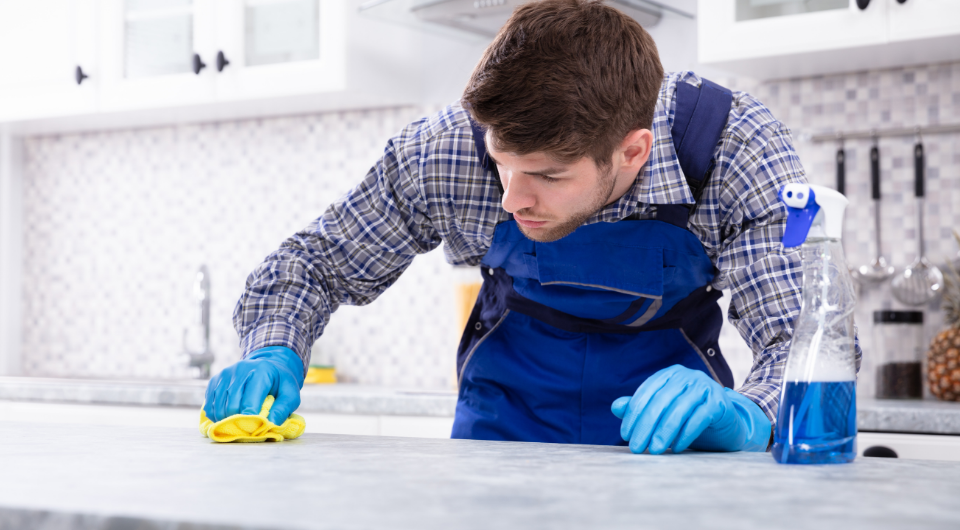
Home renovations breathe new life into your space, but once the work is complete, a major challenge remains: cleaning up the dust and debris. Construction dust settles everywhere, and larger debris left behind can make the cleaning process seem daunting. Knowing the best strategies for 裝修後清潔 can help you transform your home into a clean and welcoming environment. Here’s a step-by-step guide on how to tackle dust and debris after a home renovation.
Start with the Right Tools for Effective Cleaning
Cleaning after renovation requires specific tools to effectively remove dust and debris. To get started, gather high-quality cleaning supplies, such as a heavy-duty vacuum with a HEPA filter, a mop, microfiber cloths, dusters, and an all-purpose cleaner. For tougher jobs, consider using additional tools like a shop vacuum for larger particles, as well as protective gear like masks and gloves to keep you safe from dust and potential allergens.
A HEPA filter vacuum is particularly valuable because it traps ultra-fine particles and prevents them from recirculating into the air, making it one of the most effective tools for cleaning after renovation. Having the right equipment on hand will save you time and help you achieve a thorough clean.
Begin by Removing Large Debris and Waste
Before tackling the dust, it’s essential to clear away any large debris or waste materials left behind. This could include wood scraps, nails, leftover paint cans, and any packaging. Dispose of these items responsibly by recycling where possible or arranging a waste pickup. Removing large debris first creates a clear path for more detailed cleaning and allows you to see the extent of the dust that’s accumulated during the renovation.
For safe disposal, keep an eye out for hazardous materials like sharp objects, old paint, or any items that might contain chemicals. Properly handling and discarding these materials is a key step to ensure a safer and more manageable cleaning process after renovation.
Dust High to Low to Capture Settled Particles
Dust naturally settles from high surfaces to low ones, so the most efficient approach to cleaning after renovation is to start at the top and work your way down. Begin with the ceiling, light fixtures, ceiling fans, shelves, and any other high surfaces. Use a microfiber duster or cloth to capture dust effectively and avoid spreading it to other areas.
Pay special attention to vents, as they often trap a significant amount of dust and debris. Remove vent covers and clean them thoroughly, vacuum inside the ducts if possible, and then replace the covers. This will prevent dust from continuing to circulate in the air, helping to improve the overall air quality in your home.
Clean Windows, Mirrors, and Glass Surfaces Thoroughly
Renovations leave behind smudges, fingerprints, and dust on glass surfaces, so giving these areas special attention is essential. Start by dusting window frames, sills, and tracks to remove any initial layer of dust. Use a streak-free glass cleaner and a squeegee on windows, mirrors, and glass doors to achieve a spotless finish.
After cleaning windows, check any other glass or reflective surfaces, such as tables or cabinet inserts, and clean them with a lint-free cloth. By taking the time to make your windows and glass surfaces sparkle, you’ll enhance the brightness and cleanliness of your renovated space.
Focus on Cleaning Walls and Baseboards
Walls and baseboards can harbor dust and fine particles after renovation, especially if sanding or plastering was involved. Start by lightly dusting the walls with a microfiber cloth or a dry dust mop. Avoid using too much pressure to prevent scratching the paint or finish. If there are stubborn smudges or marks, use a damp cloth with mild soap to gently clean the area.
Baseboards, which collect dust during the renovation, should be wiped down with a damp cloth to remove any lingering debris. Attention to these details can make a significant difference in the overall cleanliness of your home, giving it a polished and well-maintained appearance.
Give Special Attention to Floors
Floors bear the brunt of renovation debris, so they need a deep and thorough cleaning. Begin by vacuuming with a HEPA filter vacuum to remove any fine dust and particles. For carpets, consider a steam cleaning session to get rid of any deeply embedded dust. For hardwood, tile, or laminate flooring, use a damp mop with a gentle cleaner to lift remaining dust and dirt.
If your floors are particularly dusty, you may need to vacuum and mop twice to achieve the best results. By focusing on floor cleaning after renovation, you’ll remove construction dust and make your home feel ready for everyday use.
Finish with Air Purification and Final Touches
Even after a deep clean, fine dust can linger in the air, which is why improving indoor air quality is an essential final step. Run an air purifier to capture any remaining particles, and consider opening windows to allow fresh air to circulate. Additionally, replacing HVAC filters shortly after renovation can prevent dust from continuing to circulate throughout your home.
Finish by going over any remaining surfaces, such as countertops, furniture, and appliances, to ensure every inch of your home is free from dust. By completing these finishing touches, you’ll be rewarded with a fresh, clean, and inviting space that’s ready to enjoy.